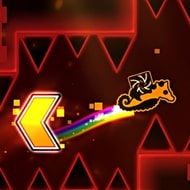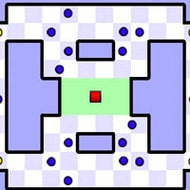
The Deadseat
The Deadseat is a first-person horror survival game that traps players inside a haunted underground train system where every step forward may trigger a paranormal event. With claustrophobic spaces, distorted audio, and eerie lighting, the game tests your nerves, memory, and instincts as you try to uncover what cursed this place—and how you can escape alive.
Navigate the Haunted Transit
From the moment you enter the decaying subway, The Deadseat immerses you in an atmosphere of dread. Unlike traditional horror games, this one limits your ability to run or fight. Instead, it relies heavily on psychological tension, sound design, and sudden environmental shifts. You’re not just walking through a haunted car—you’re living through it, solving layered puzzles, interacting with ghostly elements, and listening closely to the train’s ominous creaks and distant screams.
The train is more than a setting—it’s alive. Some cars reset themselves when you revisit them, while others shift in layout without warning. Mirrors might reflect things that aren’t there, and lights flicker to reveal clues or threats. To advance, you must solve environment-based puzzles while resisting the urge to panic.
Essential Gameplay Features
- Persistent Tension: Every action—turning a corner, opening a locker, or reading a note—may trigger a random scare event or unlock a deeper memory hidden in the car’s cursed past.
- Real-Time Puzzle Integration: Most puzzles are embedded into the environment, requiring players to manipulate objects, find matching clues, and even interpret ambient sounds to progress.
- Survival Resource Management: Your flashlight has limited battery, and resources such as notes, keys, or safe zones are scattered sparingly. You must prioritize exploration and plan your routes wisely.
Advanced Mechanics and Level Design
As you progress through The Deadseat, the train becomes less predictable. The early cars are relatively grounded, giving players time to learn how puzzles and scares work. However, mid- to late-game areas introduce shifting floors, false exits, and hallucination sequences that challenge your perception of reality.
- Audio hallucinations may distort your decision-making, forcing you to choose between seemingly identical paths.
- Light-based puzzles can only be completed by interpreting blinking patterns or shadows cast by moving objects.
- Memory loops revisit previous scenes but with subtle, dangerous changes—requiring intense attention to detail.
There’s also a lore mechanic where reading specific notes in order unlocks bonus scenes or hidden routes. If players choose to ignore the clues, they risk running in circles or encountering high-risk jump scares with no reward.
Tips for Survival and Immersion
To maximize your experience in The Deadseat, approach it slowly and intentionally. This isn’t a game about speed but about awareness and observation. Here are key survival tips:
- Use sound cues: Whispers, static, or thumping noises often signal hidden compartments, nearby ghosts, or the next puzzle zone.
- Don’t overuse your flashlight. In some scenes, darkness reveals more than light, and certain ghosts are only visible when you turn the flashlight off.
- Track note locations: You’ll often backtrack, and knowing where certain documents or objects lie saves time when new paths unlock.
- Watch for loops: If you find yourself in the same room more than twice, look for an action you haven’t taken—like sitting in a cursed seat or breaking a mirror.
The Deadseat isn’t just a game—it’s an escalating experience that blends psychological horror with layered environmental storytelling. Players who enjoy puzzle-solving under pressure and eerie, enclosed settings will find this game both intense and rewarding. The longer you ride, the stranger—and deadlier—your journey becomes.






















